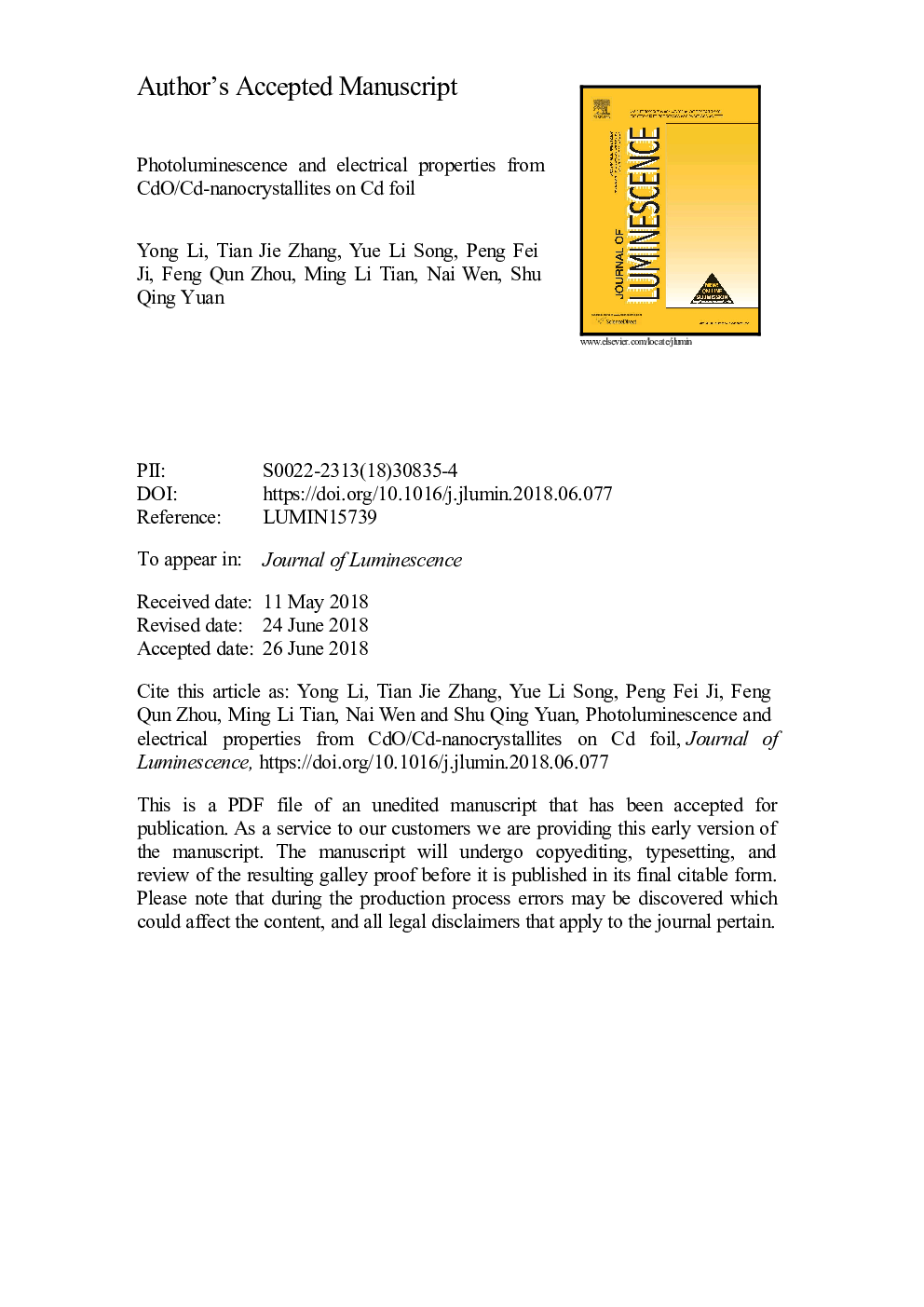| Article ID | Journal | Published Year | Pages | File Type |
|---|---|---|---|---|
| 7839726 | Journal of Luminescence | 2018 | 14 Pages |
Abstract
CdO, which is an n-type II-VI semiconductor compound, plays an increasingly important role in the optoelectronic field. In this paper, CdO micro-rods have been synthesized through using Cd foil as the Cd2+ source and the substrate by a solvothermal method, which are approximately perpendicular to the substrate. Meanwhile, Cd nanocrystallites (nc-Cd) have been fabricated, which are observed to locate at the bottom of CdO micro-rods. Photoluminescence at 10â¯K has been measured and shown multiple peak emissions. Through analyzing the temperature-dependent photoluminescence and the Varshni formula, the peak located at ~ 487â¯nm has been confirmed as the emission of band gap. The peaks of ~ 501â¯nm and ~ 588â¯nm are disappeared with the increasing of temperature, which are ascribed to the emissions from Cd interstitials to valence band and excitonic transitions, respectively. The peak located at ~ 715â¯nm is attributed to the emission of surface defects and shows blue shift with increasing temperature. It may be due to the influence of the existence of nc-Cd located at the bottom of CdO micro-rods and/or the interface between CdO and nc-Cd. The current density vs voltage (I-V characterization) from CdO/nc-Cd on Cd foil shows the obvious rectifying effect. Through analyzing the I-V characterization, it is indicated that there are a lot of defects in the CdO to impede the performance. It is believed that through optimizing the preparation process CdO/nc-Cd on Cd foil will be potentially applied in the future optoelectronic field.
Related Topics
Physical Sciences and Engineering
Chemistry
Physical and Theoretical Chemistry
Authors
Yong Li, Tian Jie Zhang, Yue Li Song, Peng Fei Ji, Feng Qun Zhou, Ming Li Tian, Nai Wen, Shu Qing Yuan,
